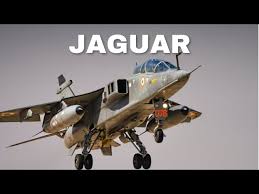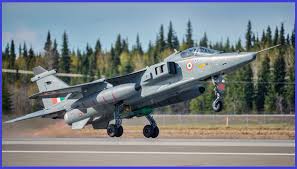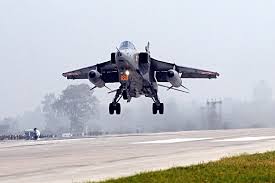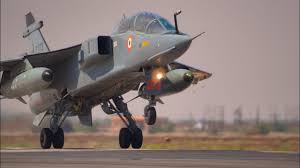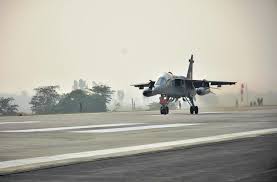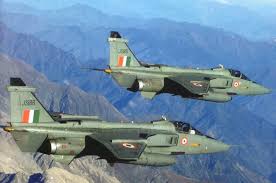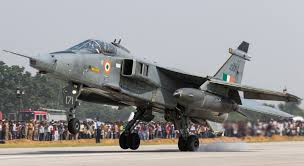
Pics courtesy Net
My article published on the Chanakya Forum website on 27 Dec 24.
On December 26, 2024, China achieved a significant milestone in military aviation with the successful first flight of its next-generation, sixth-generation fighter jet. This news, shared through videos on social media, underscores China’s advancing aerospace capabilities and ambition to compete with global superpowers in the future of air combat. In November 2024, at the Zhuhai Airshow, China had unveiled a full-scale model of its sixth-generation fighter, named the “White Emperor” or “Baidi.” This aircraft is part of Project Nantianmen’s research initiative exploring future aviation technologies.
China has made significant strides in developing cutting-edge military technologies in the ongoing arms race among world powers. A prime example of this ambition is the country’s pursuit of a sixth-generation fighter jet. Unlike its predecessors, which were revolutionary in their own right, China’s sixth-generation fighter promises to redefine air warfare in the coming decades.
Sixth-Generation Fighter
Before delving into China’s specific design, it is essential to understand what distinguishes a sixth-generation fighter aircraft from its predecessors. The first generation of fighters began with piston-engine aircraft during World War I, evolving through successive generations of increasingly advanced jet-powered machines. By the time the fifth generation came into focus in the late 20th century, fighters like the U.S. F-22 Raptor and the Russian Su-57 showcased advanced stealth features, integrated avionics, and supercruise capabilities.
Sixth-generation aircraft are set to exceed the capabilities of the fifth-generation in multiple areas. China’s sixth-generation fighter is expected to embody many, if not all, of these attributes, setting the stage for a paradigm shift in air combat. Some of the most anticipated features of a sixth-generation fighter include the following.
-
- Stealth. The focus will be reducing radar cross-sections and evading detection from multiple sensors, including infrared, radio frequency, and satellite-based tracking.
-
- AI and Autonomous Capabilities. Artificial intelligence will play a pivotal role in operations, potentially offering more autonomous flight options, battlefield decision-making, and real-time data analysis.
-
- Enhanced Supersonic Speeds. Supersonic or hypersonic speeds will allow faster response times and increased evasion capabilities.
-
- Directed Energy Weapons. Laser weapons and high-powered microwave systems are expected to be integrated into future designs to counter incoming missiles and drones.
-
- Increased Network Integration. These fighters will likely be part of a larger, interconnected combat system where communication and data-sharing between aircraft, ground stations, and satellite networks are seamless.
-
- Space-warfare Capabilities. A highly ambitious feature, these aircraft might be capable of launching attacks from near or low Earth orbit, giving them an unprecedented range and scope of operations.
The White Emperor: China’s Flagship Sixth-Generation Fighter

The most publicised and speculated model of China’s sixth-generation fighter is the “White Emperor” (Baidi), revealed in November 2024 during the Zhuhai Airshow. While exact specifications and performance capabilities remain primarily classified, several key characteristics of the White Emperor may include the following features.
Design and Stealth Features. The aircraft’s design will likely incorporate advanced stealth technologies beyond those seen in fifth-generation fighters, such as the U.S. F-35 and China’s own J-20. The White Emperor features a sleek, angular frame with a small radar cross-section, indicating composite materials and radar-absorbing coatings. Its design may also include a more refined control surface to optimise aerodynamics while maintaining low detectability across various sensor types. A significant departure from earlier generations might be using adaptive camouflage and technologies capable of deceiving advanced detection systems. These stealth features would reduce the aircraft’s visibility to radar and lower its thermal signature, which is crucial in avoiding infrared tracking from enemy aircraft and satellites.
Hypersonic Capabilities. One of the most talked-about features of the White Emperor is its potential hypersonic capabilities. The aircraft is reportedly designed to operate at altitudes of up to 25,000 meters, well beyond the reach of traditional fighter jets, and possibly capable of achieving speeds greater than Mach 5 (the speed of sound at five times the speed of sound). This would give it a significant edge in terms of both offence and defence, enabling it to outmanoeuvre current air defences and launch attacks with minimal warning. Hypersonic flight would also enhance the jet’s ability to intercept ballistic missiles and conduct long-range strikes, positioning China as a leading power in the hypersonic arms race. Hypersonic weapons also have the advantage of unpredictable trajectories, making it harder for enemies to defend against them.
AI and Autonomy. One of the most innovative aspects of the White Emperor is the role of artificial intelligence and autonomous systems. Unlike previous generations, which relied heavily on human pilots for tactical decision-making, sixth-generation fighters like the White Emperor could be equipped with AI systems capable of analysing vast amounts of data in real-time, making tactical decisions, and even controlling the aircraft’s operations during combat scenarios. The AI could assist the pilot by suggesting optimal manoeuvres, countering incoming threats, or engaging targets without direct human intervention. Furthermore, the aircraft may have options for fully autonomous missions, where the aircraft operates without the need for a pilot at all. This capability could dramatically increase the speed and efficiency of missions, particularly in high-stakes, high-speed engagements.
Directed Energy Weapons. The integration of directed energy weapons (DEWs), such as lasers or high-powered microwave systems, is another area where the White Emperor may surpass previous generations. Depending on the aircraft’s configuration, these systems can be used for air-to-air combat, air-to-ground, and air-to-space operations. Laser weapons can disable enemy drones, incoming missiles, and even aircraft at a distance without firing traditional munitions. This opens up new possibilities for offensive and defensive strategies, especially in contested areas where traditional missile defence systems may be overwhelmed.
Strategic Importance of China’s Sixth-Generation Fighter

China’s development of a sixth-generation fighter jet is a technological achievement and a strategic move that could alter the global balance of power, particularly in the Asia-Pacific region. The country’s growing military capabilities, including advancements in naval power and missile technology, have been viewed with increasing concern by other world powers, especially the United States and its allies.
Deterrence and Power Projection. The deployment of a sixth-generation fighter would give China a significant deterrent against potential adversaries. With advanced stealth, AI capabilities, and hypersonic speeds, the aircraft would be capable of conducting strikes against enemies at a moment’s notice, potentially disrupting enemy forces’ operational capabilities. The aircraft’s space-warfare capability also positions it as a tool for projecting power in regions far beyond China’s borders. For China, The White Emperor represents more than just an air superiority platform—it symbolises the country’s growing influence in military and technological domains. The ability to deploy advanced air combat technologies would bolster China’s strategic posture, particularly in contested areas like the South China Sea and the Taiwan Strait, where tensions with the U.S. and other regional powers have been rising.
Space and Cyber Warfare Integration. China’s sixth-generation fighter may also play a crucial role in the country’s broader efforts to dominate space and cyber warfare. The potential ability to strike from space—an area traditionally outside the reach of conventional fighters—would provide China with unprecedented operational flexibility. Moreover, integrating cyber warfare capabilities into such an aircraft could allow it to disrupt or degrade enemy communication, navigation, and surveillance systems, giving China an advantage in kinetic and non-kinetic warfare.
Geopolitical Implications. China’s development of sixth-generation fighters indicates a broader global military power shift. With its military modernisation efforts, China is positioning itself to rival the United States and Russia, which are also investing in next-generation air combat technologies. Moreover, China’s advancements could spark an arms race in air combat technology, with other countries seeking to develop their sixth-generation aircraft or advanced air defence systems to counter China’s growing military strength.
Implications for the U.S. and Allies. The United States and its allies have long dominated the skies with fifth-generation fighters such as the F-22 and F-35. China’s leap into sixth-generation technology challenges this dominance and could prompt a significant shift in military strategies. In response, the U.S. may accelerate its development of sixth-generation aircraft, such as the Next Generation Air Dominance (NGAD) program, to maintain technological parity.
Regional Stability. In the Asia-Pacific region, the emergence of China’s sixth-generation fighter could alter the strategic calculations of neighbouring countries, especially in the context of territorial disputes in the South China Sea and the ongoing tensions surrounding Taiwan. As China’s air combat capabilities grow, regional powers such as Japan, South Korea, and India may invest in their advanced fighter aircraft to maintain a credible deterrent against Chinese aggression.
Implications for India. The Baidi B-Type, alongside other advanced Chinese military assets, would enhance the People’s Liberation Army Air Force’s (PLAAF) capabilities, posing a challenge to India in the region. With potential deployment along contentious areas like the Line of Actual Control (LAC), these advanced jets may provide China with enhanced reconnaissance and strike capabilities, pressuring India’s defensive postures. India must accelerate its development or acquisition of sixth-generation technologies to maintain a competitive edge. This highlights the urgency for India to further its Indigenous defence programs, such as the Advanced Medium Combat Aircraft (AMCA).
Conclusion. China’s sixth-generation fighter aircraft represents a quantum leap in military aviation. With hypersonic speeds, AI-driven combat systems, and potential space-warfare capabilities, the White Emperor promises to be a game-changer in the evolving landscape of air combat. Its development underscores China’s growing military capabilities and desire to establish itself as a global superpower in conventional and unconventional warfare domains. As the world watches China’s next moves, its sixth-generation fighter’s implications will likely reverberate across global power dynamics for years to come.
Your valuable comments are most welcome.
Link to the article on the website:-
CHINA FLIES ITS SIXTH-GENERATION FIGHTER AIRCRAFT: A LEAP INTO THE FUTURE OF AIR COMBAT
For regular updates, please register your email here:-
References and credits
To all the online sites and channels.
References:-
- Jennings, Gareth. “China Flies Prototype of Sixth-Generation Fighter: Key Features Revealed.” Jane’s Defence Weekly, 15 November 2024.
- Rogoway, Tyler. “What China’s Sixth-Gen Fighter Means for the U.S. Air Force.” The War Zone, 10 October 2024.
- Defense News. “China’s Sixth-Gen Fighter: First Look at the Prototype.” 18 November 2024, www.defensenews.com.
- Insinna, Valerie. “Understanding the Sixth-Generation Fighter Race.” Breaking Defense, 25 August 2024.
- Miller, Stephen. “Hypersonics, Stealth, and AI: The Components of Sixth-Gen Fighters.” Air Force Technology Blog, 5 October 2024.
- Singh, Ankit. “AI-Driven Combat Systems in Sixth-Generation Fighters.” IEEE Aerospace and Electronic Systems Magazine, vol. 39, no. 5, 2024, pp. 34-40.
- Johnson, Mark. “The Evolution of Air Superiority: Analyzing the Shift to Sixth-Generation Fighter Technology.” Journal of Military Aviation Research, vol. 14, no. 3, 2023, pp. 45-61.
- Chen, Ming-Yu. “China’s Military Modernization: Sixth-Generation Fighter Programs in Context.” Asia-Pacific Defense Review, vol. 12, no. 2, 2022, pp. 23-34.
- Smith, Alexander. “Artificial Intelligence in Air Combat: Implications for the Sixth-Generation Fighter Race.” Aerospace Technology Quarterly, vol. 21, no. 1, 2023, pp. 12-20.
- Center for Strategic and International Studies (CSIS). The Future of Airpower: A Comparative Analysis of Sixth-Gen Fighter Programs. Washington, D.C., 2024.
- Bronk, Justin. The Future of Airpower: Trends, Technologies, and Strategies. London: Routledge, 2021.
Disclaimer:
Information and data included in the blog are for educational & non-commercial purposes only and have been carefully adapted, excerpted, or edited from reliable and accurate sources. All copyrighted material belongs to respective owners and is provided only for wider dissemination.


